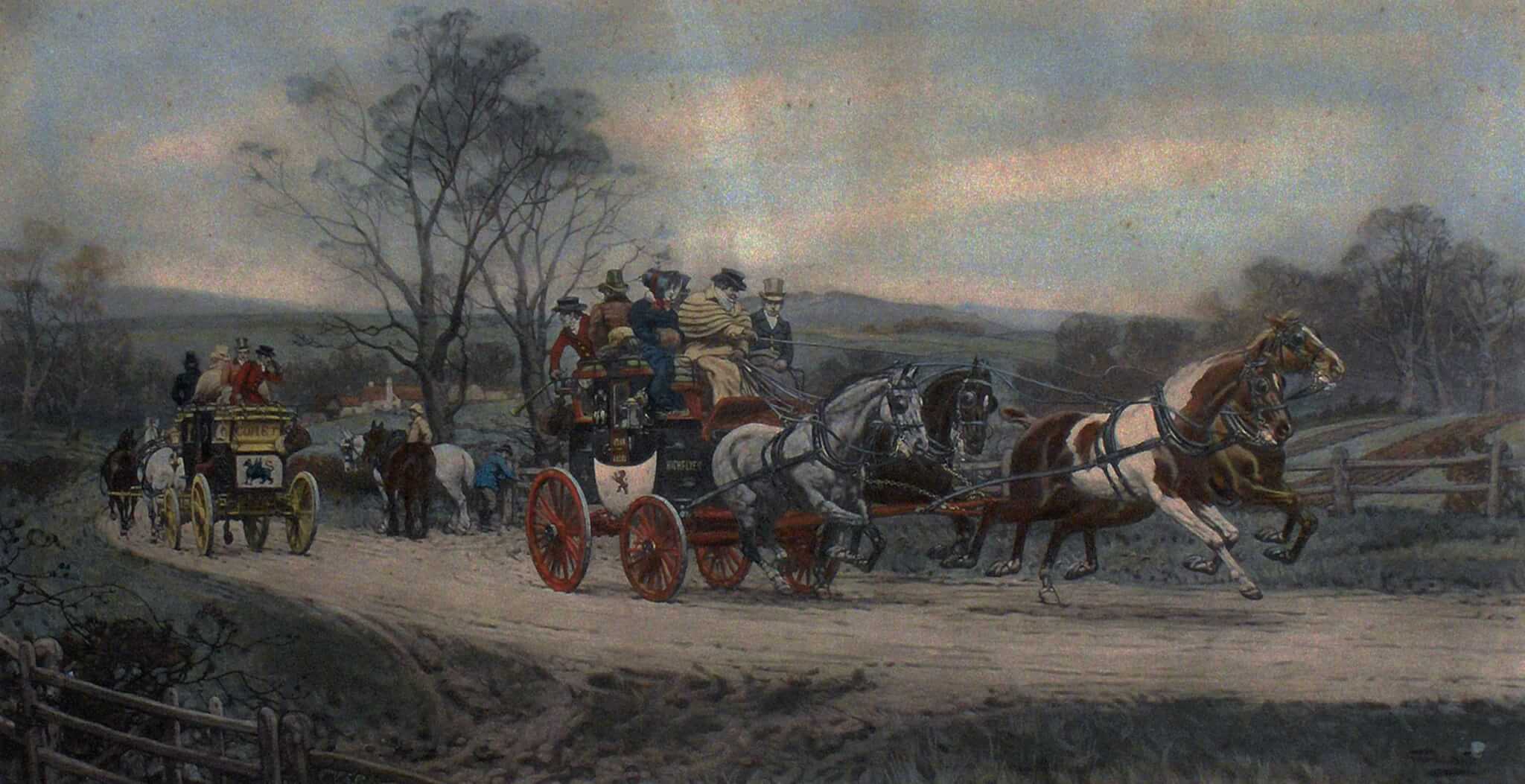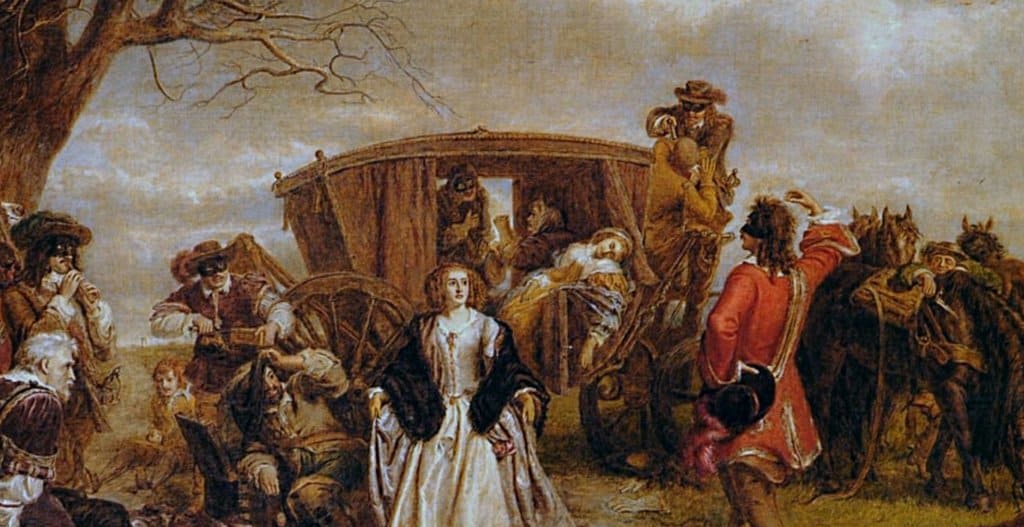Originating in England in the 13th century, the stagecoach as we know it first appeared on England’s roads in the early 16th century. A stagecoach is so called because it travels in segments or “stages” of 10 to 15 miles. At a stage stop, usually a coaching inn, horses would be changed and travellers would have a meal or a drink, or stay overnight.
The first coaches were fairly crude and little better than covered wagons, generally drawn by four horses. Without suspension, these coaches could only travel at around 5 miles an hour on the rutted tracks and unmade roads of the time. During cold or wet weather, travel was often impossible. A writer of 1617 describes the “covered waggons in which passengers are carried to and fro; but this kind of journeying is very tedious, so that only women and people of inferior condition travel in this sort.”
The first stagecoach route started in 1610 and ran from Edinburgh to Leith. Early coach travel was slow; in 1673, it took eight days to travel by coach from London to Exeter! However the formation of a stage company in 1706 established a regular coach route between York and London and soon there were regular coach services on many other routes.
Coaching inns sprang up along these routes to service the coaches and their passengers. Many of these inns are still trading today: they can be recognised by the archways which allowed the coaches to pass through into the stable yard behind the inn.
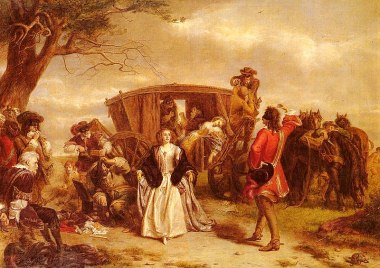
In the 17th and 18th centuries, stagecoaches were often targeted by highwaymen such as Dick Turpin and Claude Duval. Today we have rather a romanticised notion of highwaymen with their cries of ‘Stand and Deliver!’, but in reality these masked men terrorised the roads of England. The punishment for highway robbery was hanging and many highwaymen met their maker at the gallows at Tyburn.
In 1754, a company in Manchester began a new service called the “Flying Coach”, which it claimed would (barring accidents!) travel from Manchester to London in just four and a half days. A similar service began from Liverpool three years later, using coaches with the new steel spring suspension. These coaches reached the great speed of 8 miles an hour and completed the journey to London in just three days.
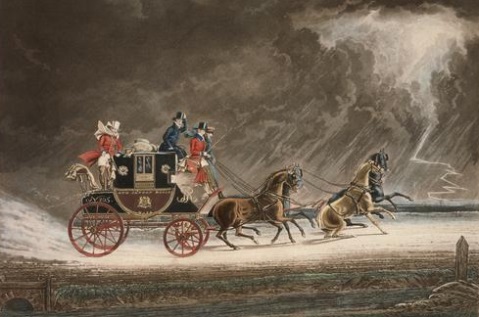
The development of the stagecoach also had a big impact on the postal service. Introduced in 1635, riders carrying the mail rode between ‘posts’ where the postmaster would take the local letters and then hand the remaining letters and any new ones to the next rider. This system was less than perfect: the mail riders were often targeted by robbers and the delivery of the mail was slow.
It was therefore decided to introduce mail coaches to transport letters and parcels in a faster, safer and more efficient way. By 1797 there were forty-two coach routes throughout the country, linking most major cities and carrying both stagecoaches and mail coaches.
The Regency period saw great improvements in coach design and road construction, leading to greater speed and comfort for passengers. For example, in 1750 it took around 2 days to travel from Cambridge to London but by 1820 the journey time had been slashed to under 7 hours.
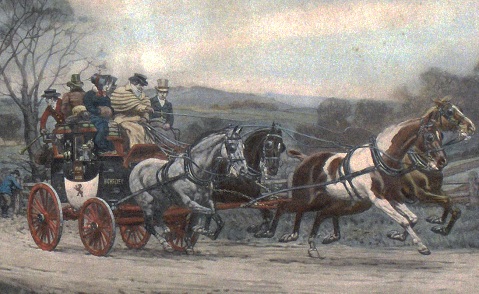
This was the golden age of the stagecoach. Coaches now travelled at around 12 miles per hour, with four coaches per route, two going in each direction with two spare coaches in case of a breakdown.
However the development of the railways in the 1830s had a huge impact on the stagecoach. Stage and mail coaches could not compete with the speed of the new railways. Soon the post was travelling by rail and by the mid 19th century, most coaches travelling to and from London had been withdrawn from service.
